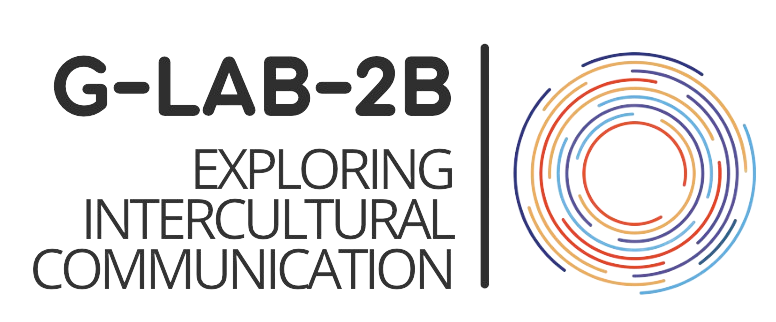Crises, as we usually understand them, are not only objective facts; they are also constructions of different perceptions. For example: Five percent inflation can be interpreted as an economic crisis or as part of a normal economic cycle. A wave of migration can be perceived as a humanitarian challenge or as an uncontrollable threat. So who determines what constitutes a crisis? The media? Politicians? Experts? Or is it society itself, through collective sentiment and public discourse [1][6]?
Table of Contents
Three perspectives on the crisis to understand its ambiguous factor
- The objective view: A crisis is a measurable event defined by clear indicators, such as unemployment rates or climate data [1][6].
- The discursive view: A crisis only exists when it is discussed by enough people and generates political action [1][6].
- The integrated view: Reality and media representation interact: real events and their dissemination in public discourse reinforce the sense of permanent crisis [6][9].
First a look back for more context
If we rewind the clock a little, since the dawn of human civilization, crises have shaped history. Wars, epidemics and famines: societies have always faced existential threats. However, never before has the term ‘crisis’ been as omnipresent as it is today. Economic crises, climate crises, health crises, migration crises: the narrative of crisis seems to encompass everything.
But do we really live in an era of constant emergency or has our perception changed?
Looking back a little further in time, historically the concept of crisis has had different meanings depending on the culture and discipline:
In ancient Greece, the term represented a decisive moment between life and death (in medicine), good and evil (in the field of law) or salvation and condemnation (in theology) [1]. On the other hand, in Roman times, the Latin word crisis focused mainly on medicine itself, indicating the turning point of an illness, which could lead to recovery or death [1].
In Chinese (Mandarin), the word for crisis is composed of two characters: wei (danger) and ji (opportunity), which highlights its dual nature as risk and potential [3][7][9]. Although popular interpretation suggests that ji explicitly means “opportunity”, linguists point out that it more precisely denotes a “crucial moment” or a turning point, and that the reading of “opportunity” is a modern reinterpretation [3][7][9].
A crisis, then, represents a decisive turning point in a dangerous development. However, whether an event really constitutes a turning point is often only clear in retrospect, once the crisis has been overcome or resolved.
Another aspect: crises used to be clearly defined events, for example, a war ended with a peace treaty or a famine ended with a good harvest.
Transboundary crises
Today, we face a type of crisis that challenges our traditional structures of response and understanding, interconnected dynamics; social, political and the high accumulation of knowledge and its rapid updating make it very difficult to understand and fit.
In short, it is not just about isolated events but about a feeling of continuous unease, driven by phenomena such as climate change, armed conflicts in different regions and natural disasters that occur anywhere in the world. These crises, known as transboundary crises [1][2][4], affect us all in some way, either because their consequences sooner or later reach our lives or because we are constantly informed and aware of their far-reaching impact.
Specifically, and from an academic perspective, we can identify three fundamental dimensions of transboundary crises:
- Spatial dimension: They are not contained within national borders. The climate crisis, for example, affects all regions of the world without distinction, as does the economic instability that spreads across global markets with unprecedented speed [1][4].
- Temporal dimension: They cannot be clearly delimited in terms of beginning and end. Unlike traditional crises such as cyclical economic recession or armed conflict with specific peace treaties, these crises evolve continuously, accumulating effects over time [1][2].
- Institutional dimension: There is no single authority capable of resolving them. States, but also international (private) organizations, operate under “fragmented” logics, which makes it difficult to build cooperative responses [1][4].
From the perspective of transformational change and crisis management, these characteristics force us to rethink traditional strategies of problem solving and cooperation. Global interdependence demands new approaches to cooperation and also to governance.
The potential of crisis: moments of convergence
It is a fact that crises are not only destructive, they can also focus attention and give rise to moments of convergence, that is, concrete turning points with a certain focus, in which societies (and politics) mobilize and really take action [1][6].
The climate crisis, for example, if widely recognized, could drive profound systemic change [1][4]. The real question is not whether we live in a perpetual crisis, but how we can learn to use it as a catalyst for progress and intercultural cooperation.
Sources:
- [1] https://onlinelibrary.wiley.com/doi/abs/10.1111/j.1468-5973.2010.00620.x
- [2] https://papers.ssrn.com/sol3/papers.cfm?abstract_id=1450738
- [3] https://asiademo.com/jhiea_en/wp-content/uploads/2012/06/0207-FA-04.pdf
- [4] https://research-portal.uu.nl/en/publications/managing-transboundary-crises-identifying-building-blocks-of-an-e
- [5] https://forum.wordreference.com/threads/weiji-%E5%8D%B1%E6%9C%BA-%E5%8D%B1%E6%A9%9F-crisis-opportunity.3699710/?hl=zh
- [6] https://journals.sagepub.com/doi/full/10.1177/0095399717747655
- [7] https://en.wikipedia.org/wiki/Chinese_word_for_crisis
- [8] https://chinese.stackexchange.com/questions/936/does-%E5%8D%B1%E6%9C%BA-really-mean-both-crisis-and-opportunity
- [9] https://languagelog.ldc.upenn.edu/nll/?p=1212


